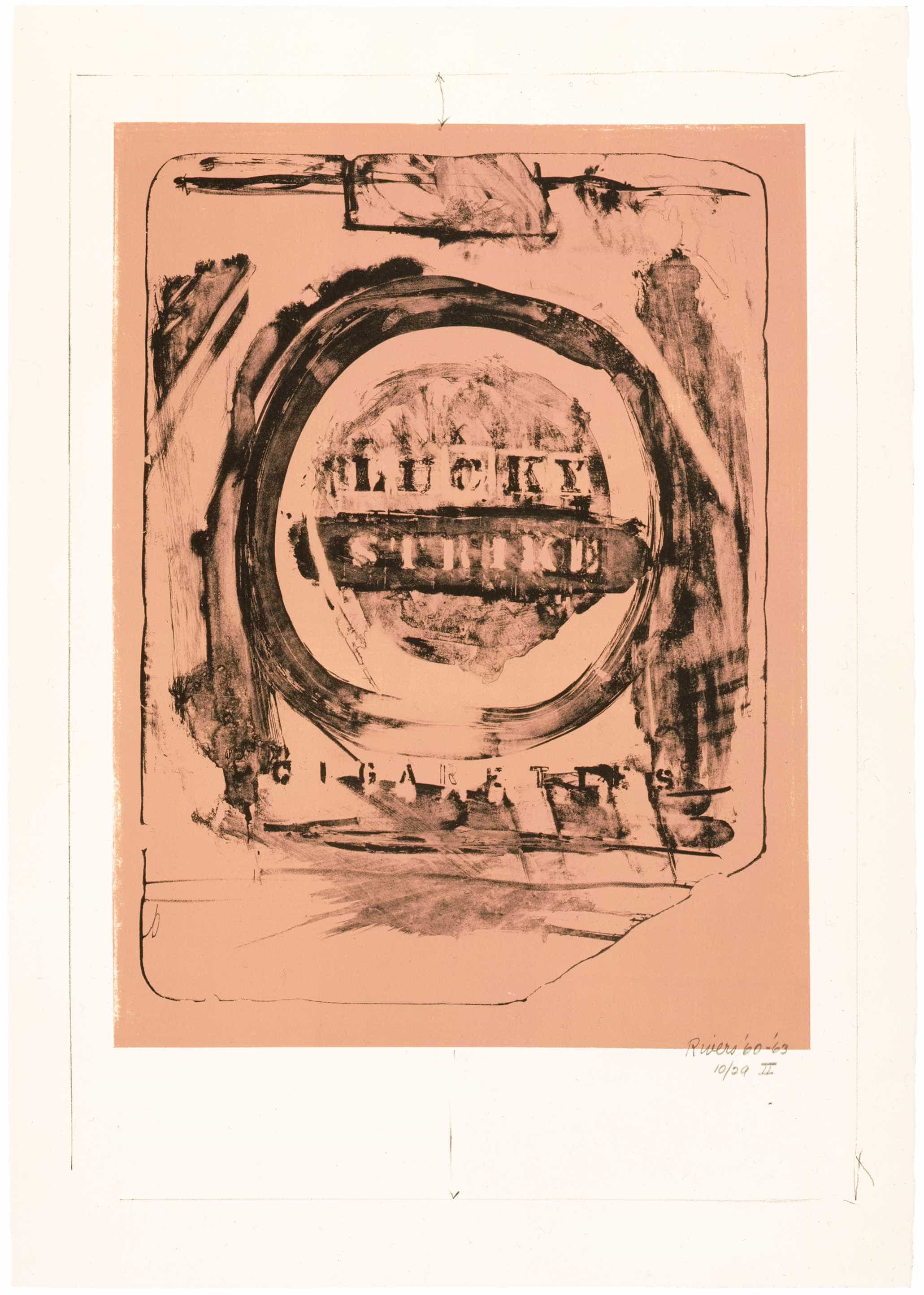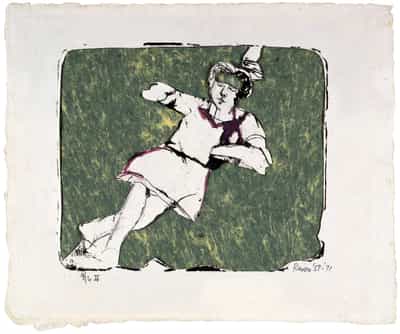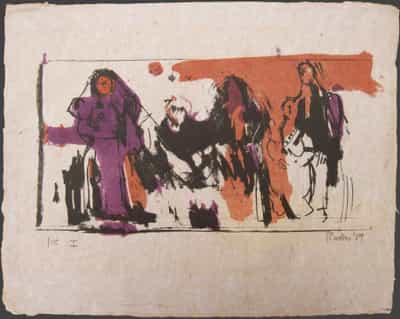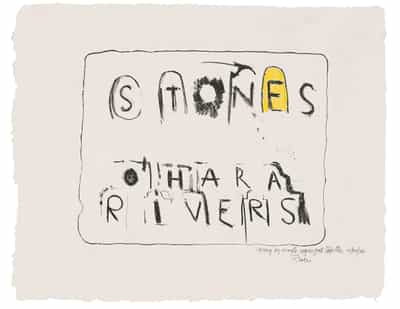About the Artist
Larry Rivers (1923-2002) studied musical composition at the Juilliard School of Music (1944-1945) before attending Hans Hofmann’s school in Provincetown, Massachusetts (1947-1948). Returning to New York, he graduated from New York University (1951) after studying with William Baziotes. But despite the influence of these two proponents of abstraction, he developed his own distinctive brand of figurative realism that is often associated with pop art. Rivers received his first one-person exhibition at the Jane Street Gallery (1949); along with Grace Hartigan, he was selected by Clement Greenberg and Meyer Schapiro for inclusion in Talent: 1950 at Kootz Gallery.
Rivers was the first artist invited to work at ULAE; when he arrived in 1957, the minimal working conditions included a single press and part-time printers. His first project, with the poet Frank O’Hara, entitled Stones, 1957-1960, fulfilled Tatyana Grosman’s goal of encouraging artists and writers to collaborate in the studio. Subsequent prints, such as French Money, 1963, and Lucky Strike II, 1963 show Rivers developing the historically allusive figuration for which he is best known. As Rivers’ sophistication as a printmaker developed, so did the technical abilities of ULAE’s facility and staff; and the artist expanded his prints to include sculptural constructions in the three-dimensional lithograph Diana with Poem, 1970-1974. In 1967 Rivers began a collaboration with the writer Terry Southern. The Donkey and the Darling, 1967-77, is a complex book of fifty-two lithographs that took en years to complete. In 1983 Rivers completed the eleven-color lithograph Garbo Grosman as a posthumous tribute to Tatyana.



